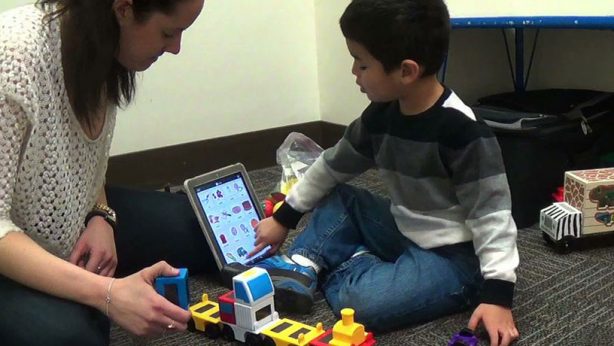Despite fears, DSM-5 is a step forward
When the American Psychiatric Association (APA) released the proposed criteria for autism in the DSM-5, its revision of the Diagnostic and Statistical Manual of Mental Disorders, it caused panic for many people on the spectrum — perhaps because they don’t like change.
Now that the DSM-5 has been published, however, I expect the fuss will calm down. I was among those who raised concerns about the proposed deletion of Asperger syndrome— butlooking at it dispassionately now, there seems to be little to fear in the DSM-5 autism entry, and a lot to recommend it.
One big fear was that many people who qualified for a diagnosis of autism under the previous edition, the DSM-IV, might fail to meet criteria in the DSM-5 and lose access to services. I think the APA (or an independent watchdog) could go a long way toward alleviating this fear by monitoring how many people slip through the net in this way.
If the numbers start to mount, then clearly the DSM-5 might need a little nip and tuck to iron out these flaws. It wouldn’t be the first time that the APA published ‘revised’ criteria, and it would not undermine the positive aspects of the manual. It would simply mean that the engineers need a lot of data to fine-tune its precision, as with any tool, and some of those data will come in after the first version is released.
A related fear is that people who display insufficient signs to meet the criterion of ‘restricted, repetitive patterns of behavior, interests and activities’ (and who formerly perhaps had the diagnosis of pervasive developmental disorder-not otherwise specified [PDD-NOS]), may be moved into the new category of ‘social (pragmatic) communication disorder’ (SCD). Will there be as many services for SCD as there are for its better-established cousin, autism?
The DSM-5 has sensibly included a note to guard against this, saying, “Individuals with a well-established DSM-IV diagnosis of autistic disorder, Asperger’s disorder, or PDD-NOS should be given the diagnosis of [autism spectrum disorder].”
There will be a need for research to monitor this new SCD category, and to lobby for services for SCD that are equal to those for autism, on grounds of fairness.
Welcome changes:
So what are the positive steps forward in the DSM-5?
First, lumping social and communication symptoms into one cluster or domain makes a lot of sense and was long overdue, going back at least 25 years1. The DSM-IV lists these as separate impairments, but communication is inherently social, social interaction is inherently communicative, and both require a theory of mind — the ability to infer others’ thoughts and feelings. So the DSM-5 has ironed out a long-standing nonsensical distinction.
Second, introducing levels of severity for autism is a welcome addition, as this gives us a way of measuring how much the traits interfere with an individual’s everyday capacity to cope. The DSM-5 has only a 3-point scale, but it’s a valuable nod in the direction of acknowledging these individual differences.
Third, introducing ‘specifiers’ (such as with or without accompanying intellectual impairment, or with or without accompanying language impairment) gives us a way to further characterize individual differences in terms of intelligence quotients (IQs) and language level. These have long been known to be of major prognostic value2, so the DSM-5 brings old wisdom in line with current diagnostic practice.Second, introducing levels of severity for autism is a welcome addition, as this gives us a way of measuring how much the traits interfere with an individual’s everyday capacity to cope. The DSM-5 has only a 3-point scale, but it’s a valuable nod in the direction of acknowledging these individual differences.
And, at a stroke, these specifiers also mean that the much-loved category of Asperger syndrome (introduced into the DSM-IV after 50 years of waiting) has not really been removed or deleted, since it continues to exist as the absence of these two specifiers. (In Europe, where we use the 10th edition of the International Classification of Diseases, or the ICD-10, we will continue to use the term Asperger syndrome, until or unless the ICD-11 goes the same way as the DSM-5.)
Some people with Asperger syndrome may understandably feel threatened by the loss in the DSM-5 of a succinct term to describe their identity, but in practice there has been no loss of its meaning. The APA may need to extend the specifiers to include information related to developmental history (such as age of onset of single words or phrase speech), so that all features of the former Asperger syndrome are still part of the new autism spectrum disorder.
Dimensional approach:
The presence of one or the other of these two specifiers also means that what some used to refer to as ‘classic autism’ is now better operationally defined. This is a helpful step forward because it means that an individual could be flagged not only as having autism, but also as having language impairment, intellectual impairment, or both. This effectively signals to a service provider that the person may have a single, double or even a triple set of needs to be met.
And this is good news for research that can, from here on in, specify which of these subgroups are being studied. For example, science can continue to explore if there are biological differences between those with or without language impairment, or with or without intellectual impairment (which there are bound to be).
This means that the DSM-5 has given us a nice, smooth dimensional approach to autism (since IQ and language can both be measured dimensionally) whilst at the same time giving us easy-to-carve subgroups. We may in time need more such specifiers3, so that the DSM-5 is useful not just for clinical practice but also for fine-grained research to reduce the heterogeneity in the autism spectrum.
I do have a different issue with the DSM more broadly, but this is not specific to the DSM-5 or to autism. It’s that the DSM loves the term ‘disorder.’ Most of the entries in the DSM are called ‘disorder,’ but on this side of the pond, some of us prefer the term ‘condition.’
The word ‘disorder’ literally means ‘absence or breakdown of order’ (toward randomness). This is rather value-laden and makes assumptions about the nature of the condition where there may not be adequate evidence. Some would say it’s also rather harsh and stigmatizing (How would you like to be told you are disordered?).
The term ‘condition’ still signals to the service provider that this is biomedical in etiology, and is a disability, but avoids the somewhat negative connotations of the term ‘disorder.’ Indeed, the term ‘condition’ is actually pretty neutral: Consider its use in the question ‘What’s the condition of your health?’
So, my personal preference would be that the DSM-6 replace ‘autism spectrum disorder’ with ‘autism spectrum condition.’ ASD to ASC is only one small letter different, but a big conceptual shift.
Simon Baron-Cohen is director of the Autism Research Centre at Cambridge University in the U.K.
References:
1. Baron-Cohen S. J. Autism Dev. Disord. 18, 379-402 (1988) PubMed
2. Rutter, M. (1978). Autism: A reappraisal of concepts of treatment. New York, NY: Plenum Press.
3. Lai M.C. et al. PLoS Biol. 11, e1001544 (2013) PubMed



